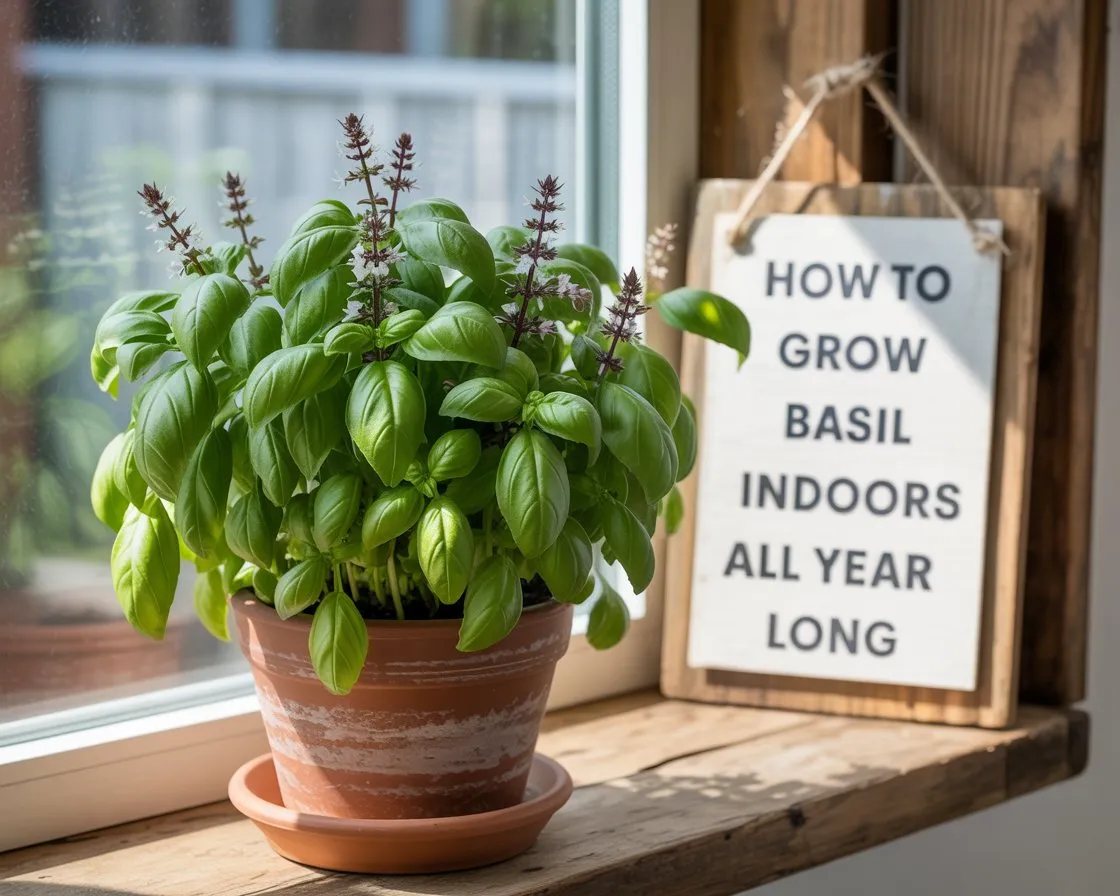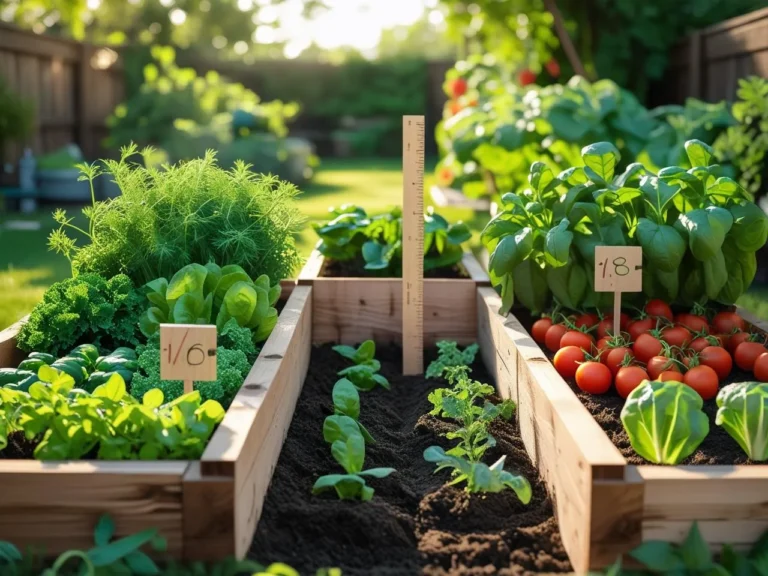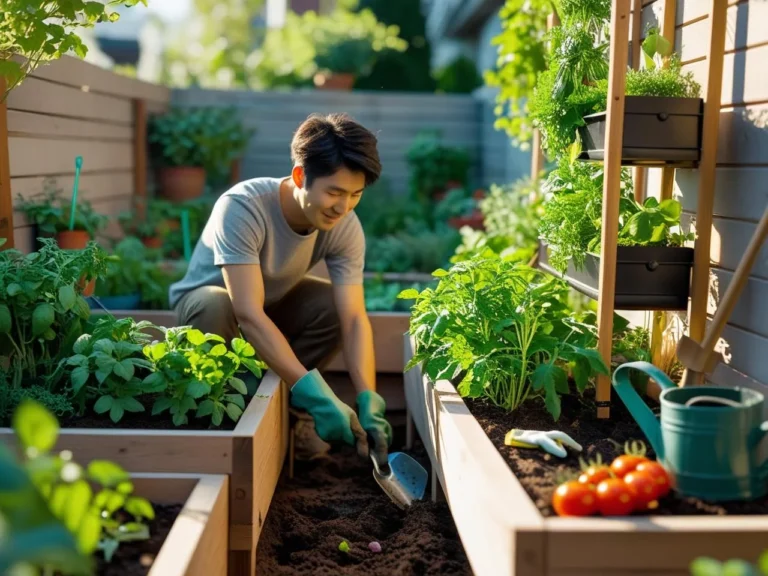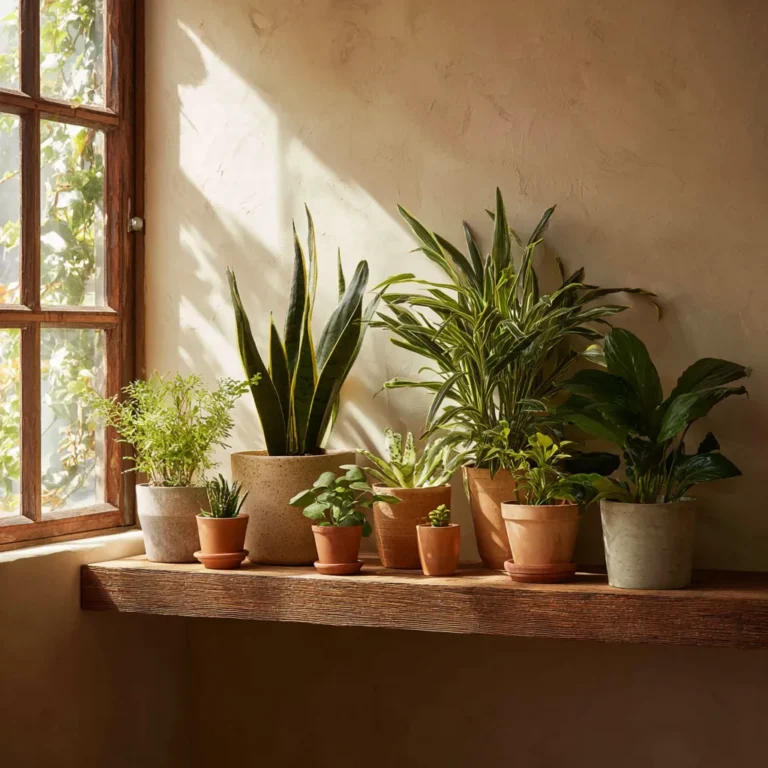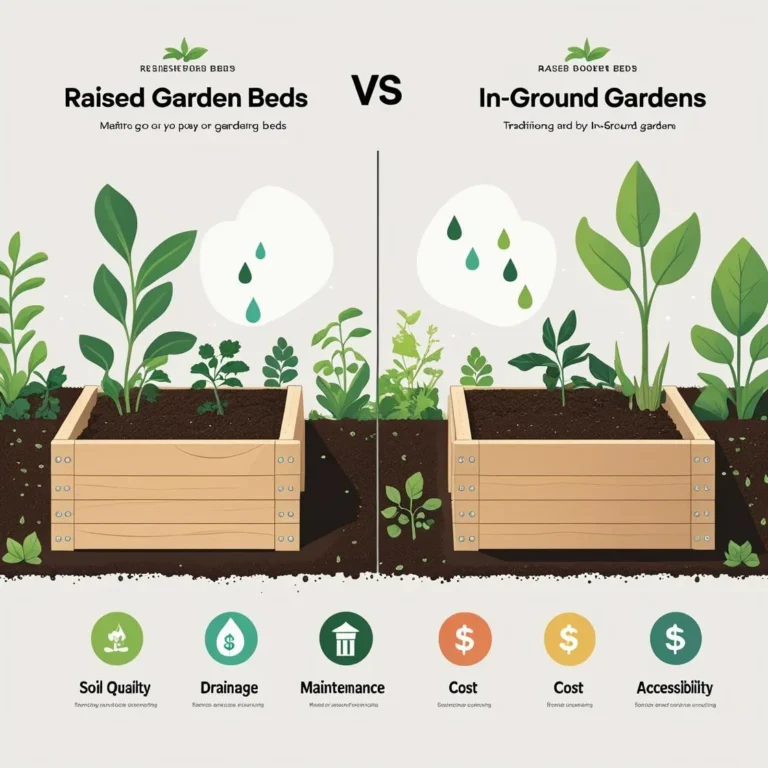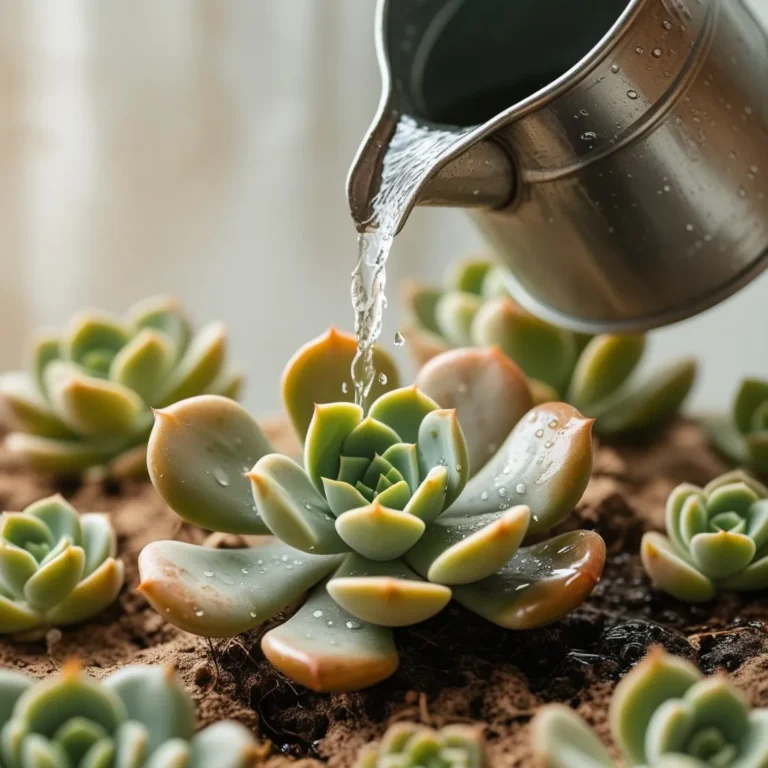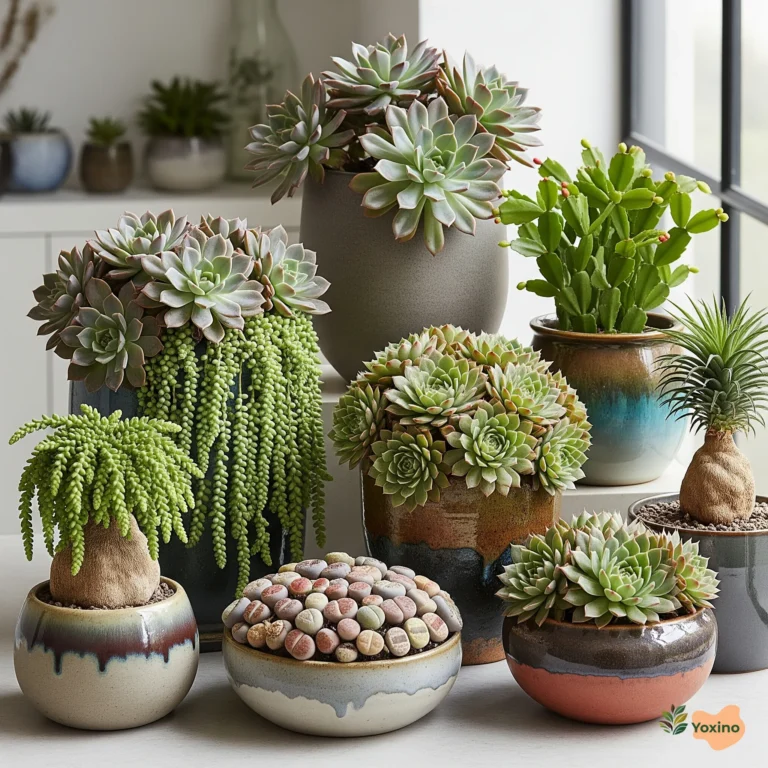How to Grow Basil Indoors All Year Long
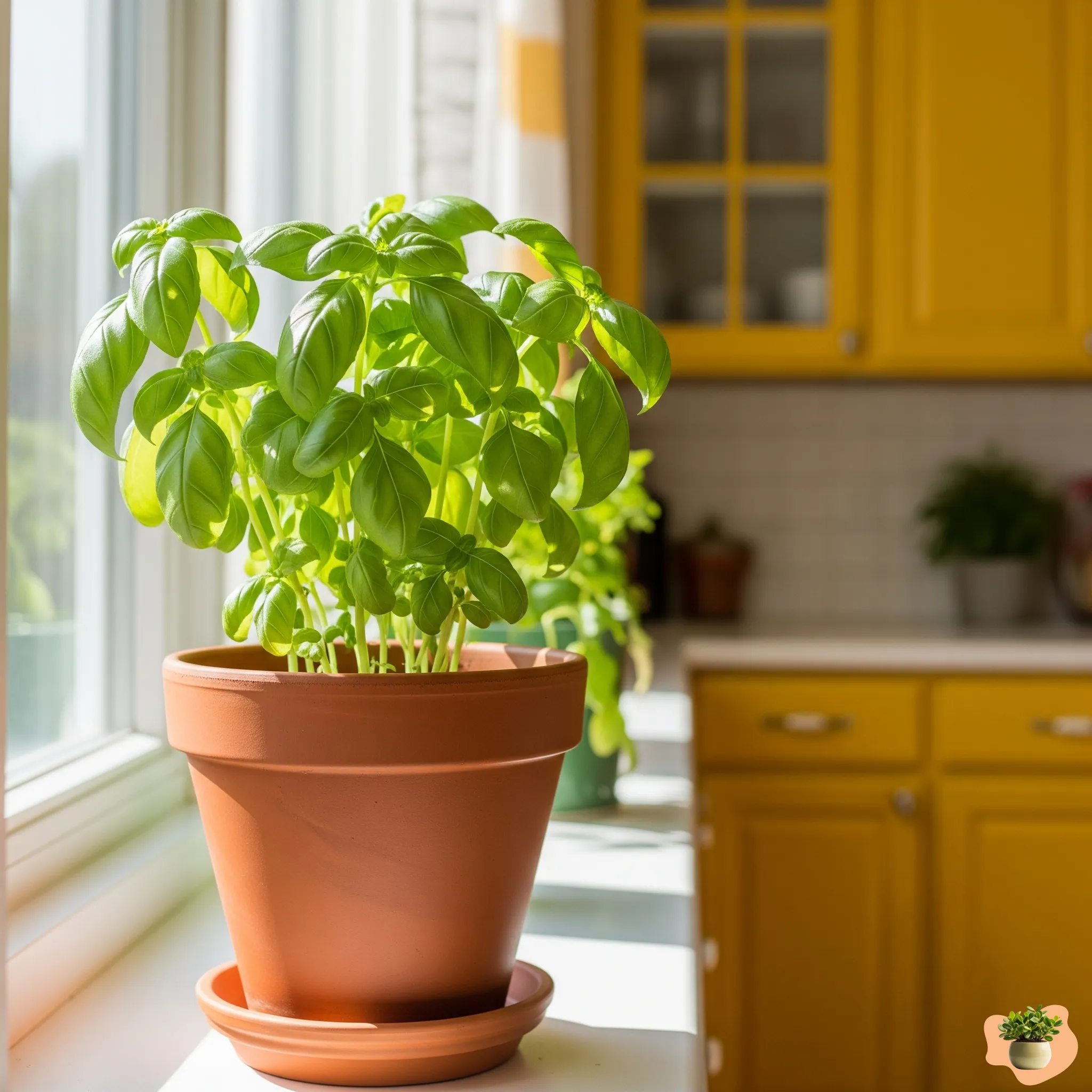
Learning to grow basil indoors transforms your cooking and saves money year-round! Fresh basil’s intoxicating aroma and superior flavor make it worth growing at home, especially during winter months when store-bought herbs are expensive and lack punch. Indoor basil care is surprisingly simple – with the right setup, you’ll harvest fresh leaves weekly for pasta, pizza, and pesto.
Whether you’re a beginner gardener or experienced home cook, growing this beloved herb indoors guarantees fresh ingredients at your fingertips!
Basil Growth Timeline Indoors
| Stage | Time Frame | What to Expect |
|---|---|---|
| Seed germination | 5–10 days | Tiny green sprouts |
| Leaf development | 2–3 weeks | First sets of true leaves |
| First harvest | 3–4 weeks | Enough leaves to snip |
| Ongoing harvesting | Weekly | Bushier growth with trimming |
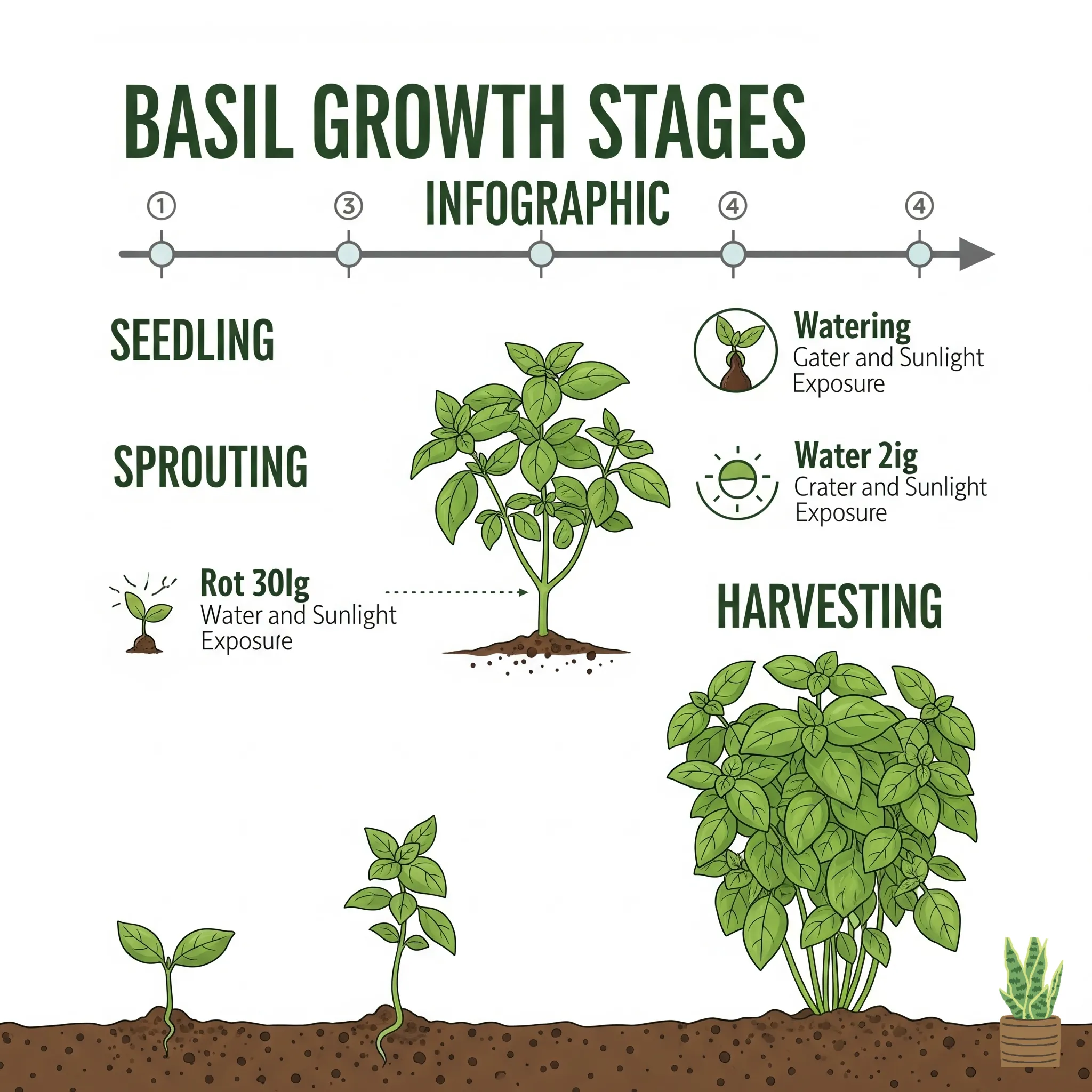
Choosing the Right Containers & Soil for Basil
Success with basil in pots starts with proper foundation:
Container Requirements:
- 6-8 inch diameter pots minimum
- Multiple drainage holes essential
- Terracotta or ceramic preferred for breathability
- Avoid plastic in direct sunlight (overheats roots)
Soil Selection:
- High-quality organic potting mix
- Add perlite for improved drainage
- pH level between 6.0-7.0 ideal
- Never use heavy garden soil (poor drainage kills basil)
Pro Tip: Start with smaller pots for seedlings, then transplant to larger containers as plants mature.
Basil Sunlight Needs for Indoor Growing
Basil sunlight needs are significant – this Mediterranean herb craves bright conditions:
- Minimum: 6+ hours direct sunlight daily
- Best placement: South-facing windows
- Winter solution: Full-spectrum LED grow lights 12-16 inches above plants
- Light duration: 14-16 hours under artificial lighting
Signs of insufficient light: Leggy growth, pale leaves, reduced fragrance Signs of too much light: Scorched leaf tips, wilted appearance despite moist soil
Light & Water Care Checklist
| Need | Recommendation |
|---|---|
| Sunlight | 6+ hours (or grow lights) |
| Watering | When top inch is dry |
| Humidity | Moderate, mist occasionally |
| Temperature | 18–24°C (65–75°F) |
| Air circulation | Gentle fan prevents fungal issues |
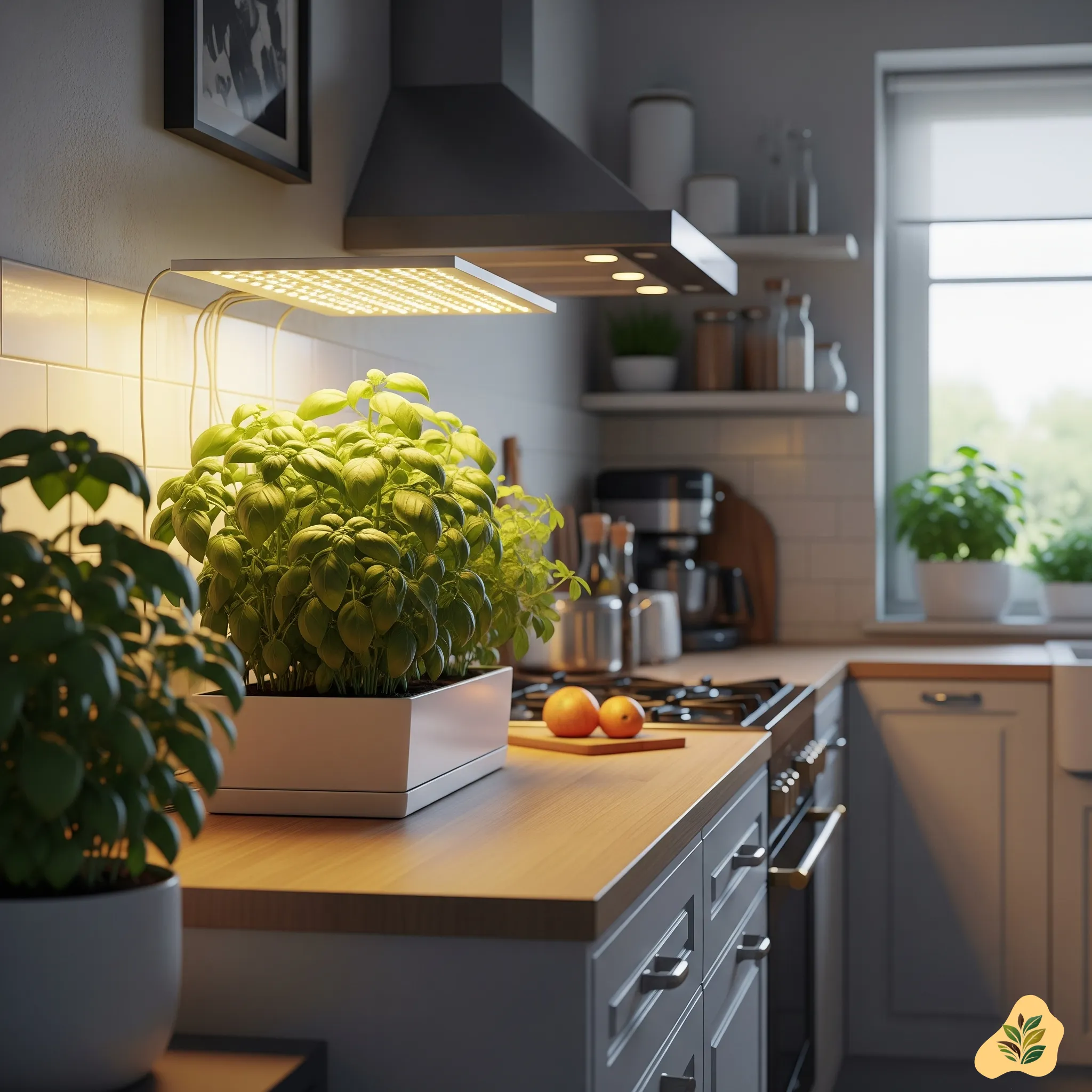
Watering & Fertilizing Your Indoor Basil
Proper Watering Technique:
- Check soil moisture by inserting finger 1 inch deep
- Water thoroughly until drainage flows from bottom holes
- Empty saucers after 30 minutes to prevent root rot
- Morning watering allows excess moisture to evaporate
Fertilizing Schedule:
- Diluted liquid fertilizer every 2 weeks during growing season
- Organic fish emulsion or balanced 10-10-10 fertilizer
- Reduce feeding in winter when growth slows
- Over-fertilizing reduces essential oil concentration (less flavor!)
Harvesting Basil for Maximum Growth
Smart how to harvest basil techniques keep plants productive:
Harvesting Rules:
- Start when plants reach 6 inches tall
- Pinch leaves from top, encouraging bushy growth
- Never harvest more than ⅓ of plant at once
- Cut just above leaf nodes to promote branching
Flower Prevention:
- Remove flower buds immediately (they make leaves bitter)
- Pinch growing tips weekly during peak season
- Continuous harvesting prevents flowering
Propagation Bonus: Cut 4-inch stems, remove lower leaves, root in water for 2 weeks, then transplant for new plants!
Troubleshooting Common Basil Problems
| Problem | Cause | Fix |
|---|---|---|
| Yellowing leaves | Overwatering | Water less often |
| Leggy growth | Not enough light | Move closer to sunlight |
| Black spots | Fungal issue | Improve airflow, remove affected leaves |
| Wilting despite wet soil | Root rot | Repot with fresh, well-draining soil |
| Small, pale leaves | Nutrient deficiency | Feed with balanced fertilizer |
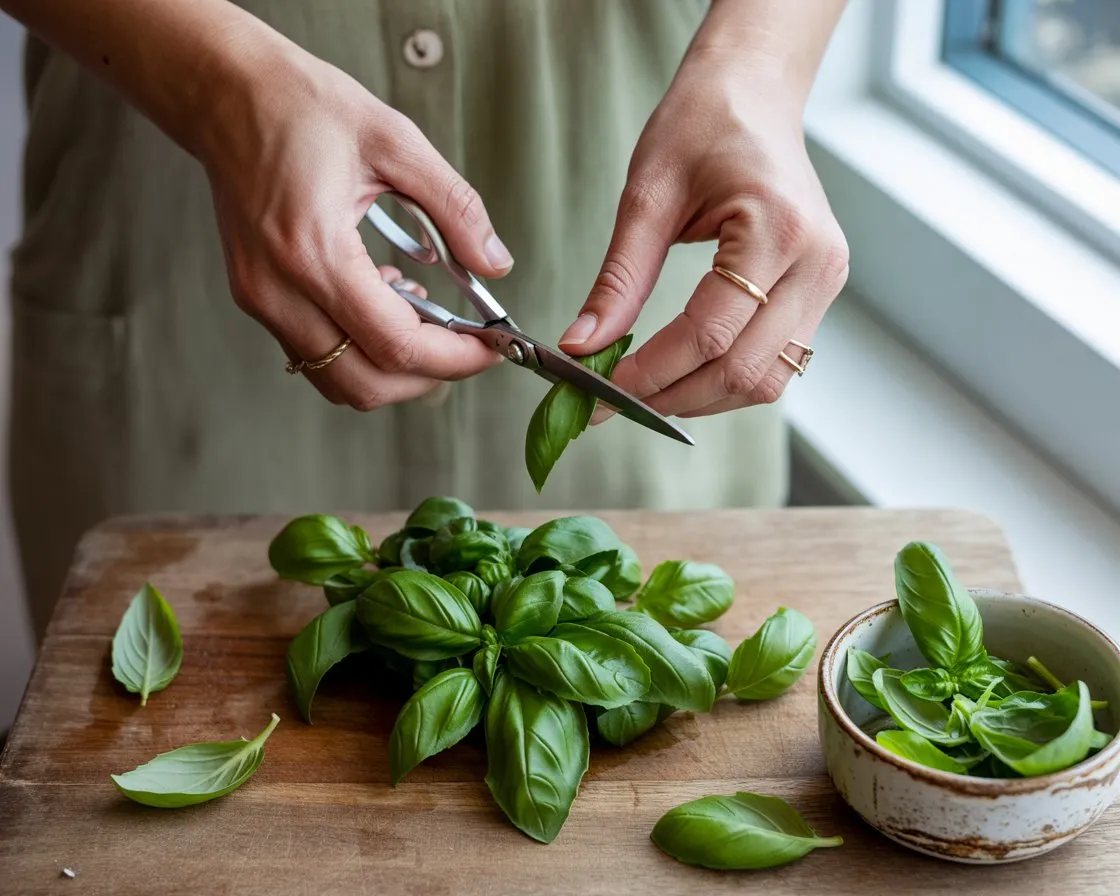
Essential Tips for Year-Round Success
Seasonal Adjustments:
- Summer: Move pots away from hot windows, increase watering
- Winter: Supplement with grow lights, reduce watering frequency
- Spring: Begin fertilizing as daylight hours increase
- Fall: Take cuttings before first frost for winter plants
Variety Recommendations:
- Sweet Basil: Classic pizza and pasta herb
- Genovese: Traditional pesto variety
- Purple Ruffles: Ornamental with mild flavor
- Greek Basil: Compact growth, perfect for small spaces
Maximizing Your Indoor Basil Harvest
Growing herbs inside successfully requires consistency and observation. Start with quality seeds or healthy nursery plants, maintain proper lighting and watering schedules, and harvest regularly to encourage continued growth.
Storage Tips:
- Fresh leaves keep 1 week in refrigerator
- Freeze leaves in ice cube trays with olive oil
- Dry excess harvest for winter seasoning
- Make pesto to preserve summer flavors
Common Beginner Mistakes to Avoid
- Overwatering – More basil dies from too much water than too little
- Insufficient light – Leads to weak, flavorless plants
- Ignoring flowers – Reduces leaf production and quality
- Harvesting too aggressively – Stresses plants beyond recovery
Conclusion
Learning to grow basil indoors opens up endless culinary possibilities while saving money on expensive store-bought herbs. With proper containers, adequate lighting, and regular harvesting, you’ll enjoy fresh basil year-round. The key is starting with quality supplies and maintaining consistent care.
Growing herbs inside has never been easier – even apartment dwellers can create thriving herb gardens on sunny windowsills. Start your basil journey today and taste the difference fresh herbs make in your favorite recipes!
Share your indoor basil success stories and inspire other home cooks to grow their own fresh herbs.

